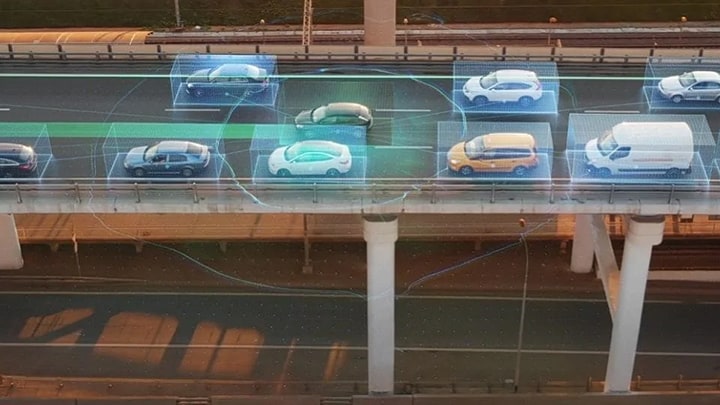Imagine being behind the wheel, and the harsh glare of the sun obstructs your
view of a child in a school crosswalk. Or you turn a corner, and you
don’t see the jogger through the thick of the fog. Or a teenager,
distracted on a cell phone, crosses your path at exactly the wrong time.
These are just a few scenarios where lighting, fog, road configuration and
other vehicles can delay and obstruct a driver’s view of pedestrians
– and the outcome can be fatal.
What if our cars could alert us to make it safer for pedestrians in the road?
That’s exactly what our partner Neavia Technologies set out to do with
the world’s first V2X pedestrian warning solution.
The solution combines the Neavia V2I station – a cooperative
intelligent transport system (ITS) roadside unit – with a connected
Neavia EcoCam Plus camera to detect pedestrians. As soon as a pedestrian nears
or crosses the road, the camera alerts the road side unit. This roadside unit
then sends an alert instantly and securely to nearby vehicles, warning the
driver of the approaching pedestrian.
IEEE 802.11p-based RoadLINK connects cars to the infrastructure.
Developed by NXP and Cohda Wireless, RoadLINK is used in the Neavia V2I station to exchange messages reliably
across an extended range at high speed, cutting ‘time to react’
and communicating potential hazards and safety-critical scenarios
significantly faster than other applications. RoadLINK is based on IEEE
802.11p wireless communication protocol, a proven standard backed by a decade
of testing with European, U.S. government and professional institutions.
Compared to slower and less reliable cellular networks, the 802.11p wireless
protocol allows the RoadLINK solution to deliver deterministic performance for
safety-critical applications like Neavia’s pedestrian warning solution and also provides high levels of security and privacy protection. Furthermore,
the Neavia solution is fully secured and compatible with advanced PKI
infrastructures.
![]()
Neavia V2I station decentralized emergency notification messages broadcasted to nearby cars
meet both 802.11p and European Telecommunications Standards Institute (ETSI)
standards.
Compact and with low-power consumption, this V2I station can be powered by a
solar panel so it can be used where no main power is available.
Neavia’s V2X pedestrian warning solution is a step forward for road
safety and pushes us one step closer to the promise of safety that autonomous
cars will bring us.
Neavia V2X pedestrian warning solution



